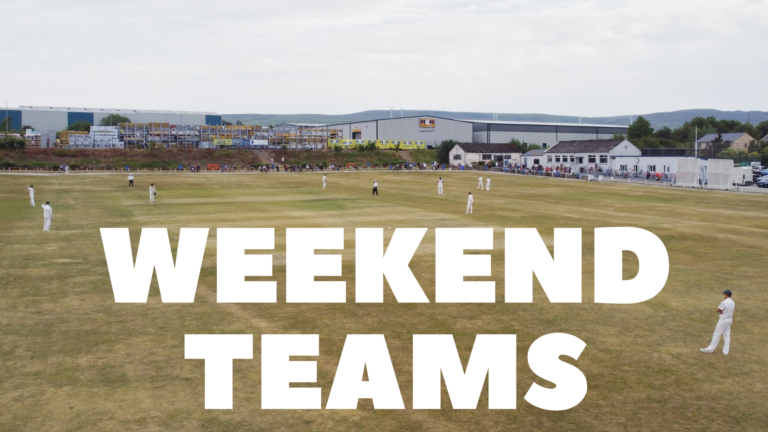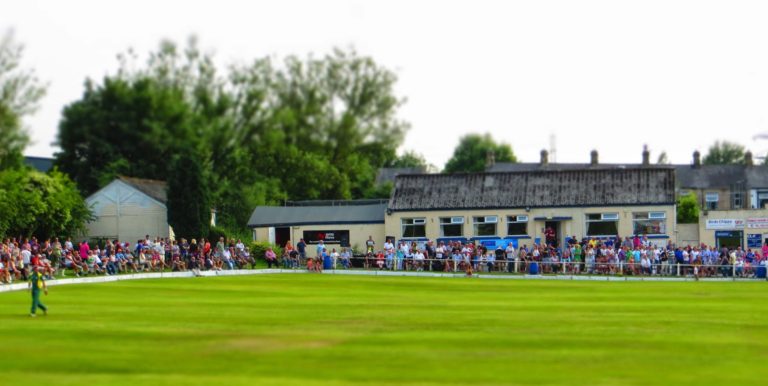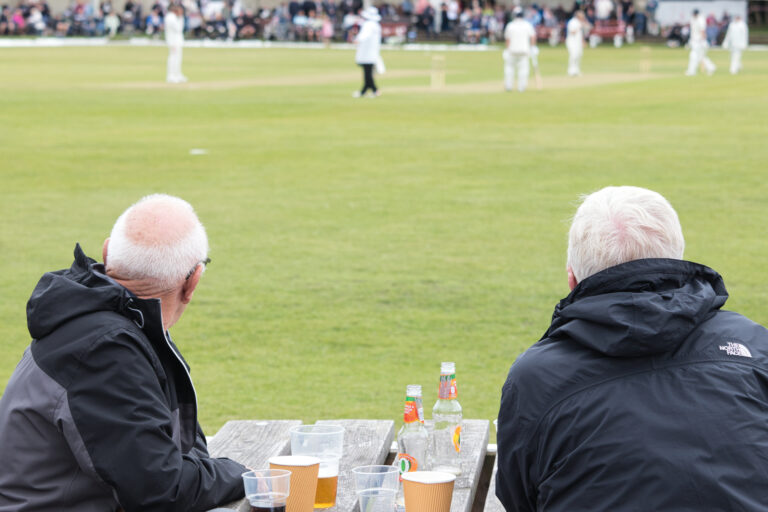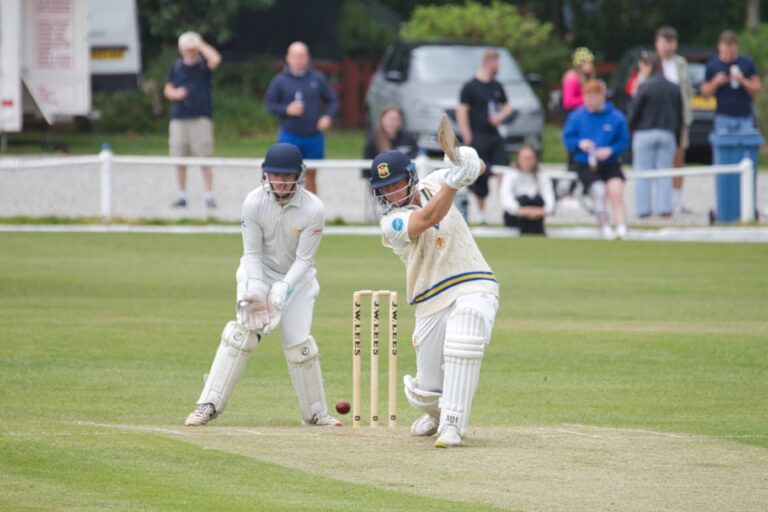1940 – 1944: Amateurs Only…
By Anne Cochrane
On 27th October, 1939, the Lancashire League Secretary wrote to all the clubs:

Incidentally, the war isn’t mentioned a great deal in the 1944 League meeting minutes, however at the meeting of 26/4/1944, it was noted:
“In the event of the invasion of the continent by the Allied Forces, the President asked that all the Clubs should make every effort to fulfil their fixtures. ”
Also of interest perhaps is that on 2/8/1944 Lowerhouse registered a new umpire, Mr. L Stansfield of 26 Rutland Ave. and alarmingly
“The attention of the Reps. was called to the fact that if a person is hit by a cricket ball on a road outside their ground the club and player concerned would be liable for an action for damages”.
(The Minutes are available on-line here.)
Clubs were divided about when to start engaging pros again, some wanted pros as early as the 1943 season , and in February 1944 Nelson, Colne, Burnley, Lowerhouse and Accrington proposed pros be allowed for 1944 whether the war was over or not. It was agreed that “the definition of “the war is over” should mean the cessation of hostilities in Europe.”
The other clubs disagreed, and so it was 5 years before the clubs could again engage professionals for the 1945 season, if they wanted to. They could however register as amateur only for another season, and two clubs, Rishton and Church, did choose that option. Rishton’s amateur team had won the 1944 League by 8 points, and Church were 4th, so they perhaps felt strong enough to get through what was bound to be a transitional season without the expense of a pro. Lowerhouse had finished 5th from bottom, an improvement on the previous season when they had to apply for re-election. Clubs were warned against making contracts with pros in such a way as they would avoid paying tax as that would certainly mean trouble with the Inland Revenue.
Amateur-only clubs got 3 points for a win against a team with a professional, teams with a pro. got 2 points for a win.
All our four local clubs, Colne, Nelson, Burnley and Lowerhouse engaged pros. Details are on the Civic Trust Heritage Image Collection Cricket page here.
The first three were quick off the blocks. Burnley signed Ellis Achong, a former West Indian test spin bowler for whom the “Chinaman” is reputedly named. Colne immediately signed George Pope who pre-war was a well established all-rounder for Derbyshire.
Nelson signed A.E. Nutter, a Lancashire County player, who in 1939 “was regarded as one of the coming all -rounders in England, a medium to fast bowler, a fine batsman and one of the best fielders in first-class cricket.”

Lowerhouse’s secretary reported at the 1944 AGM in November, that they were struggling to find the right man, probably the price had to be right too. It wasn’t until January 20th 1945 that the club revealed that they had signed Norman G. Spencer, who until that point had been an amateur with Colne, described as an all-rounder, the previous season he had topped Colne’s batting and bowling averages and returned the best bowling figures in the Lancashire League.
Nelson’s pro was still in the RAF, Lowerhouse’s had been playing as
an amateur for Colne but both Colne and Burnley signed pros from the
Bradford League, which, as in WW1, had carried on playing with professionals, in order to maintain a good standard, which people would want to watch, as that was good for morale.
There are grumbles in the 1944 Lancashire League minutes about Bradford League clubs trying to poach amateurs from the Lancashire League

Contracts with pros. could only be made for the 1945 season, in fairness to any professional cricketers still in the Forces, who would be back and available for 1946 season.
On 25th July, 1945 the Express reported that Lowerhouse had offered Spencer terms for 1946 but he had decided not to stay on. “Spencer has not enjoyed the best of health and this coupled with long hours of work at his home town, Colne, has had an effect on his decision. Also he does not want to be tied to remain in the district next year. The pro’s answer will be received with regret for his relations with the club were of the happiest, and he has been a popular personality at Lowerhouse. No-one was more concerned than he when he had a lean spell in June and no one was more pleased when he returned to form with a brilliant 8 for 46 against Ramsbottom. “
“Memorable” ; Lowerhouse v Nelson 19th May 1945
“This was the second time this season that he had taken eight wickets, the previous occasion being in the memorable match against Nelson when, after Nutter (Nelson’s pro.) had taken all ten Lowerhouse wickets, Spencer, bowling from the opposite end, captured eight Nelson wickets for 30. ” For Lowerhouse Harold Peel the not out batsman, was the highest scorer with 21. Lowerhouse were all out for 67 and won by 8 runs.
Spencer went back to Colne as an amateur for the 1946 season then played professionally in the Bolton League and for Barnoldswick before ending up back at Colne as an amateur in 1953.
Church’s confidence in their amateurs was justified, whilst Rishton ended up next to the bottom. Lowerhouse would possibly have been reasonable happy with sixth from bottom.

Again courtesy of the Lancashire League website.





